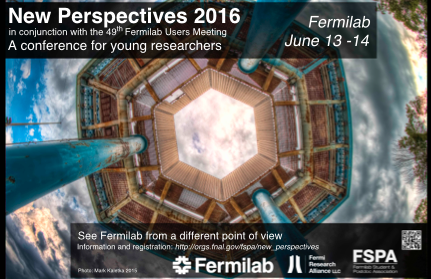Conveners
Session 6: MINOS, Theory, and the Dark Sector
- Stephen Parke (Fermilab)
Thomas Carroll
(University of Texas at Austin)
14/06/2016, 11:00
The MINOS experiment ran from 2003 until 2012 and produced some of the best measurements of the atmospheric neutrino oscillation parameters $\Delta m^2_{32}$ and $\theta_{23}$ using muon neutrino disappearance of beam and atmospheric neutrinos and electron neutrino appearance of beam neutrinos. The MINOS+ experiment succeeded MINOS in September 2013. For almost three years MINOS+ has been...
Mr
Rui Chen
(the University of Manchester)
14/06/2016, 11:15
The MINOS experiment is a long-baseline on-axis neutrino oscillation experiment. The two detectors are separated by 734km and optimised for sensitivity to the disappearance of muon neutrinos delivered by the NuMI beamline at Fermilab. Due to the different possible beam configurations, MINOS has accumulated 10.56e20 protons on target (POT) from a muon neutrino dominated beam and 3.36e20 POT...
Mr
Simon De Rijck
(University of Texas at Austin)
14/06/2016, 11:30
The MINOS experiment was designed to study neutrino oscillation between two scintillator-steel tracking-sampling calorimeters separated by a $734\,\text{km}$ baseline using muon neutrinos and antineutrinos generated in the NuMI facility at Fermilab. Running for ten years with a neutrino beam peak energy of $3\,\text{GeV}$, MINOS yielded some of the best constraints on the atmospheric neutrino...
Dr
Gordan Krnjaic
(Fermilab)
14/06/2016, 11:45
I will give a brief review of the highlights of research from the Fermilab theory group. We try to address big questions of fundamental physics, including the origin of mass, the origin of the matter-antimatter asymmetry, supersymmetry, dark matter, etc. We approach these big questions with all possible testing grounds for fundamental physics. We are now in a very exciting era of new ideas,...
Aaron Meyer
(University of Chicago)
14/06/2016, 12:00
In this talk, I will discuss recent work fitting the nucleon axial form factor to deuterium bubble chamber data using a model-independent approach known as the z expansion (arXiv 1603.03048[hep-ph]). This talk will briefly introduce the z expansion and talk about the advantages and impacts of such a framework. I will describe the functionality which has been implemented into GENIE to handle a...
Mr
Andrew Watson
(Temple University)
14/06/2016, 12:15
Decades of evidence from numerous fields of astronomy suggests that a majority of the mass content of the universe is ``invisible'' -- that is, it doesn't interact via the electromagnetic force. Indirect evidence for this ``dark matter'' can be found in galactic rotation curves, gravitational lenses, and debris from colliding galactic clusters, among other places. One of the most promising...
Dr
Yuanyuan Zhang
(Fermilab)
14/06/2016, 12:30
The Dark Energy Survey (DES) embarked on a 5 year survey of 5000 deg$^{2}$ of sky in 2012. DES is dedicated to dark energy studies of type Ia supernovae, large scale structure, weak lensing, and galaxy clusters. Early results based on commissioning data were released in 2015. The vast data set from DES is also being used for a variety of other topics. Highlights include searching for solar...
Alex Drlica-Wagner
(Fermilab)
14/06/2016, 12:45
The population of Milky Way satellite galaxies includes the least luminous, least chemically evolved, and most dark matter dominated galaxies in the known universe. Due to their proximity, high dark matter content, and lack of astrophysical backgrounds, dwarf spheroidal galaxies are promising targets for the indirect detection of dark matter via gamma rays. Prior to 2015, roughly two dozen...
